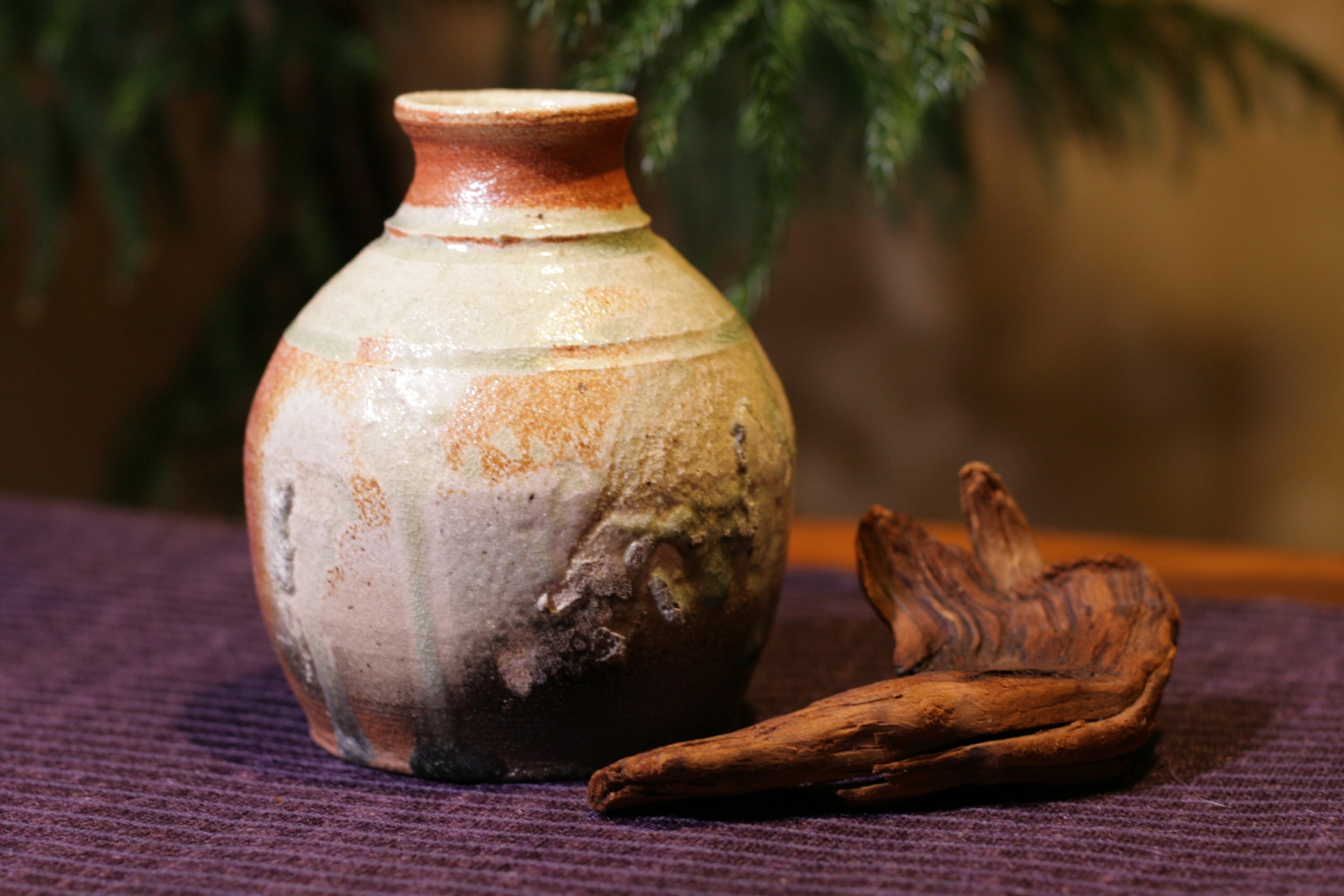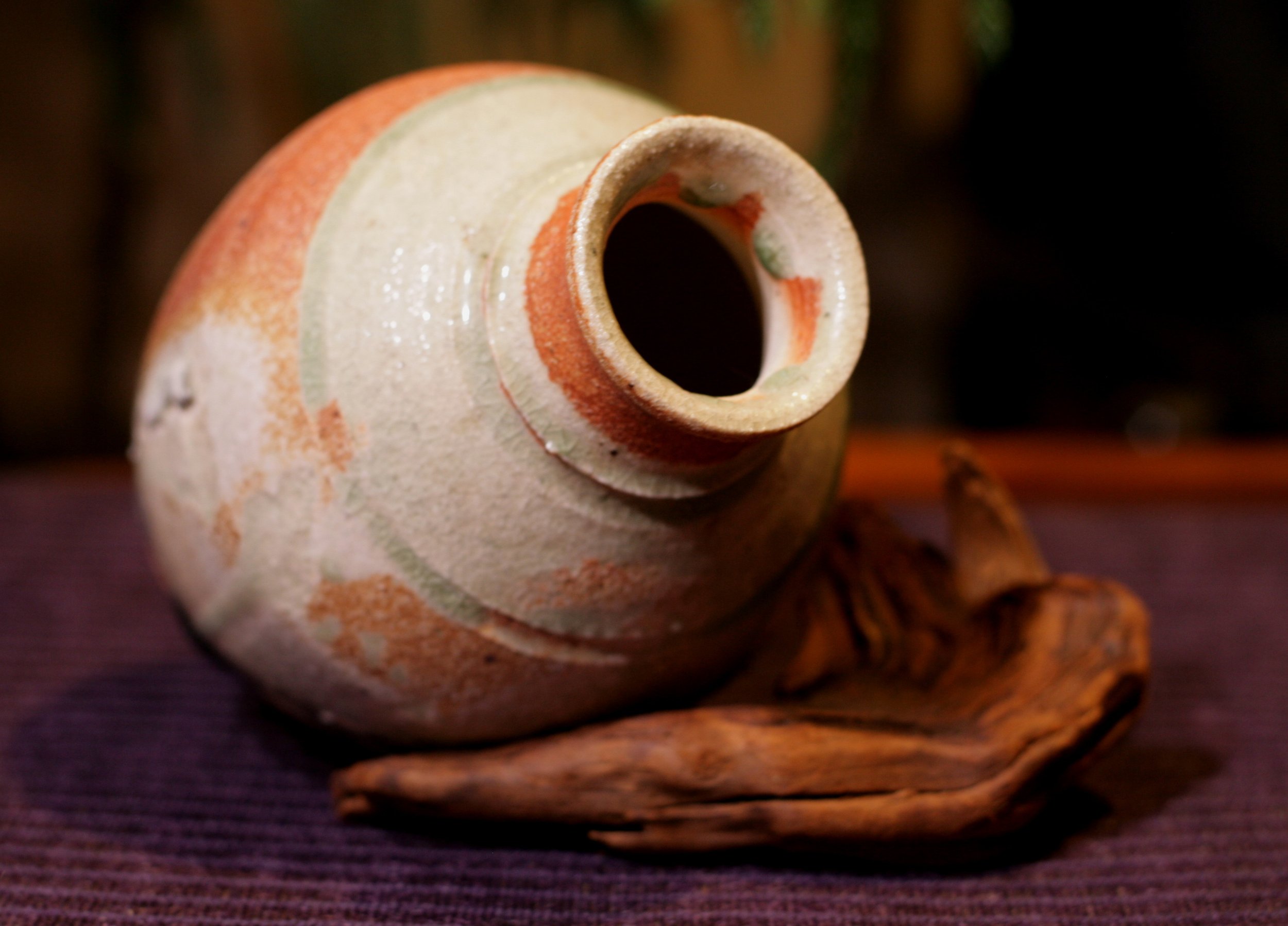 Image 1 of 8
Image 1 of 8

 Image 2 of 8
Image 2 of 8

 Image 3 of 8
Image 3 of 8

 Image 4 of 8
Image 4 of 8

 Image 5 of 8
Image 5 of 8

 Image 6 of 8
Image 6 of 8

 Image 7 of 8
Image 7 of 8

 Image 8 of 8
Image 8 of 8









Iga yaki woodfired vase (15)
Iga yaki woodfired vase. 13cm
Iga yaki is a Japanese ceramics tradition found in Mie prefecture on the island of Honshu that is characterized by unglazed woodfired wares made of a high-heat resistant clay that is roughly formed in the wabi-sabi aesthetic. Pottery has been made in Iga since the 7th century, but like many ceramic traditions in Japan, it really came to popularity during the 16th and 17th century. Iga yaki was particularly known by tea enthusiasts for its production of vases and mizusashi (water containers) that were utilized by tea masters like Sen-no Rikyu. Iga yaki has always been associated with utilitarian needs and the cookware of Iga is well-renowned. The clay used in Iga yaki is sourced from around Lake Biwa. This clay is also sourced for use in Shigaraki yaki, with which Iga yaki is often associated.
Terms associated with Iga yaki:
Katamimi/mimitsuki – ear lugs, the small handles that are characteristic features of Iga yaki vases and mizusashi.
Herame – gouges and dents found on the body of vessels of Iga yaki that contribute to the wabi-sabi aesthetic sought for in the ware.
Bidoro aka. tombo no me– “dragonfly’s eye”, the usually green globular drops of vitrified ash that form on the body of vessels.
Yohen – “kiln change”, a decorative technique using ash glazes to create subtle to dramatic color variations on the vessel body. These occur naturally in woodfire kilns.
Iga yaki woodfired vase. 13cm
Iga yaki is a Japanese ceramics tradition found in Mie prefecture on the island of Honshu that is characterized by unglazed woodfired wares made of a high-heat resistant clay that is roughly formed in the wabi-sabi aesthetic. Pottery has been made in Iga since the 7th century, but like many ceramic traditions in Japan, it really came to popularity during the 16th and 17th century. Iga yaki was particularly known by tea enthusiasts for its production of vases and mizusashi (water containers) that were utilized by tea masters like Sen-no Rikyu. Iga yaki has always been associated with utilitarian needs and the cookware of Iga is well-renowned. The clay used in Iga yaki is sourced from around Lake Biwa. This clay is also sourced for use in Shigaraki yaki, with which Iga yaki is often associated.
Terms associated with Iga yaki:
Katamimi/mimitsuki – ear lugs, the small handles that are characteristic features of Iga yaki vases and mizusashi.
Herame – gouges and dents found on the body of vessels of Iga yaki that contribute to the wabi-sabi aesthetic sought for in the ware.
Bidoro aka. tombo no me– “dragonfly’s eye”, the usually green globular drops of vitrified ash that form on the body of vessels.
Yohen – “kiln change”, a decorative technique using ash glazes to create subtle to dramatic color variations on the vessel body. These occur naturally in woodfire kilns.